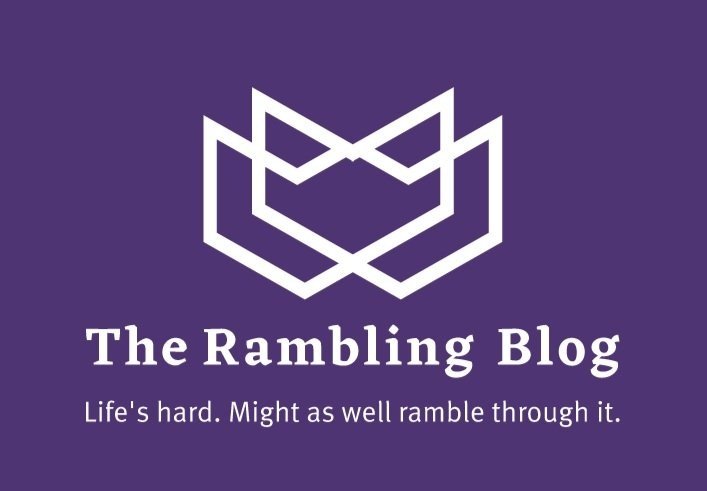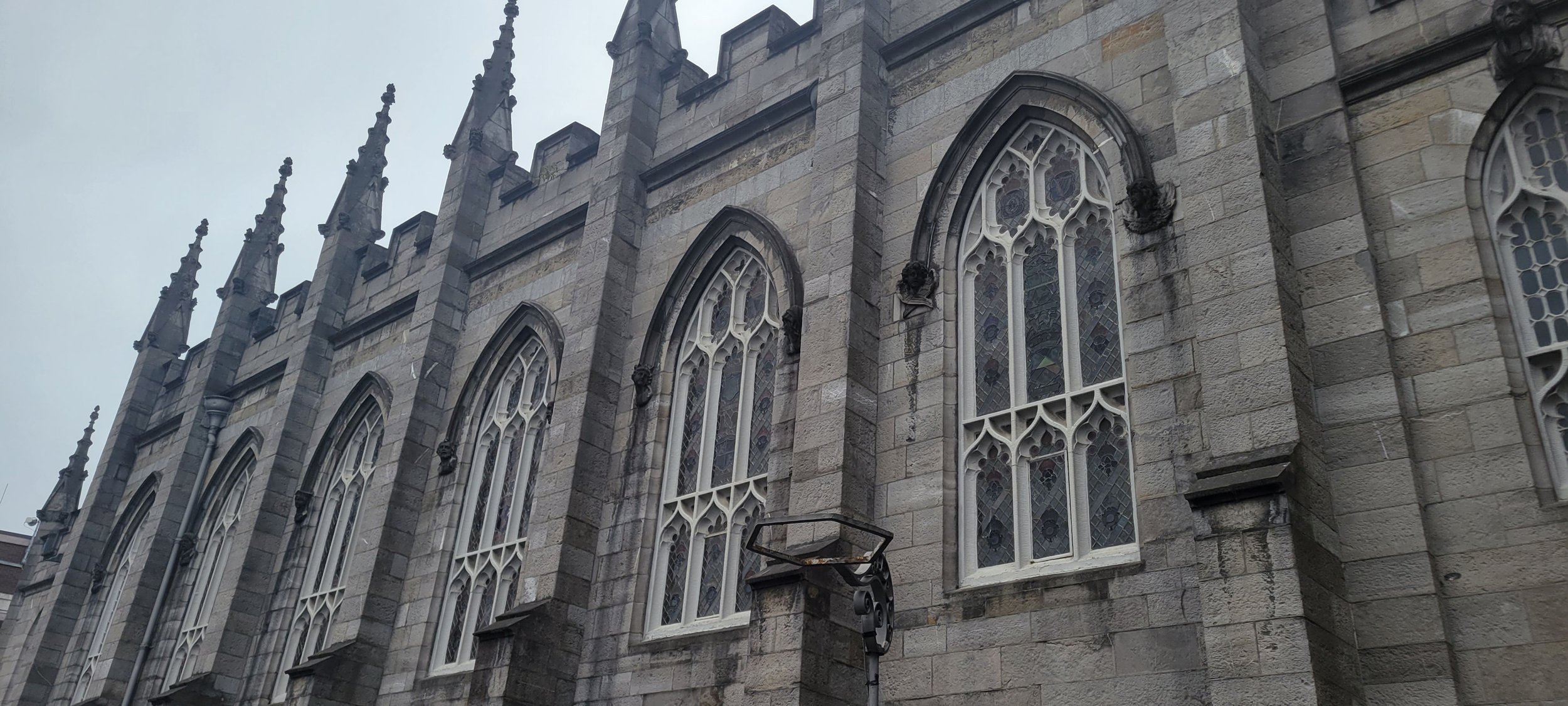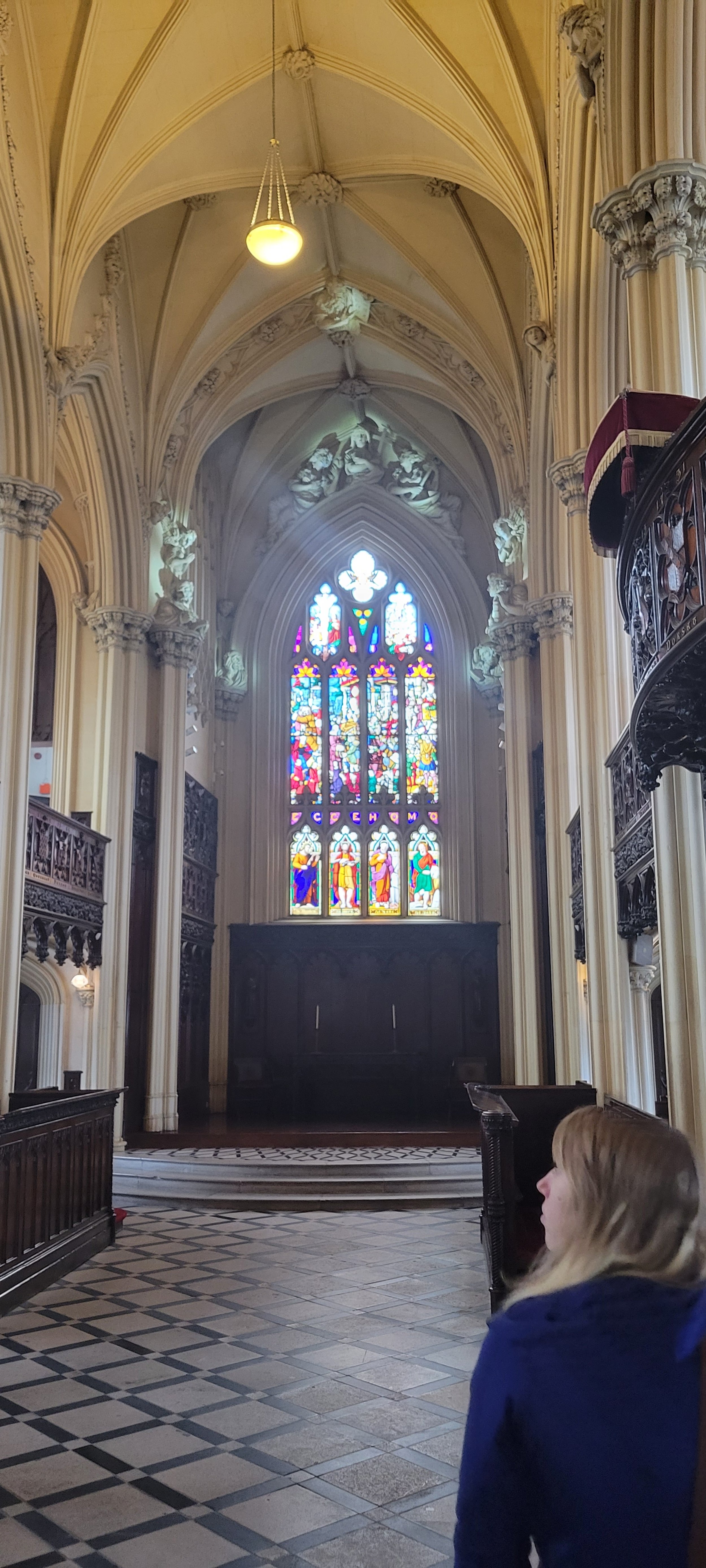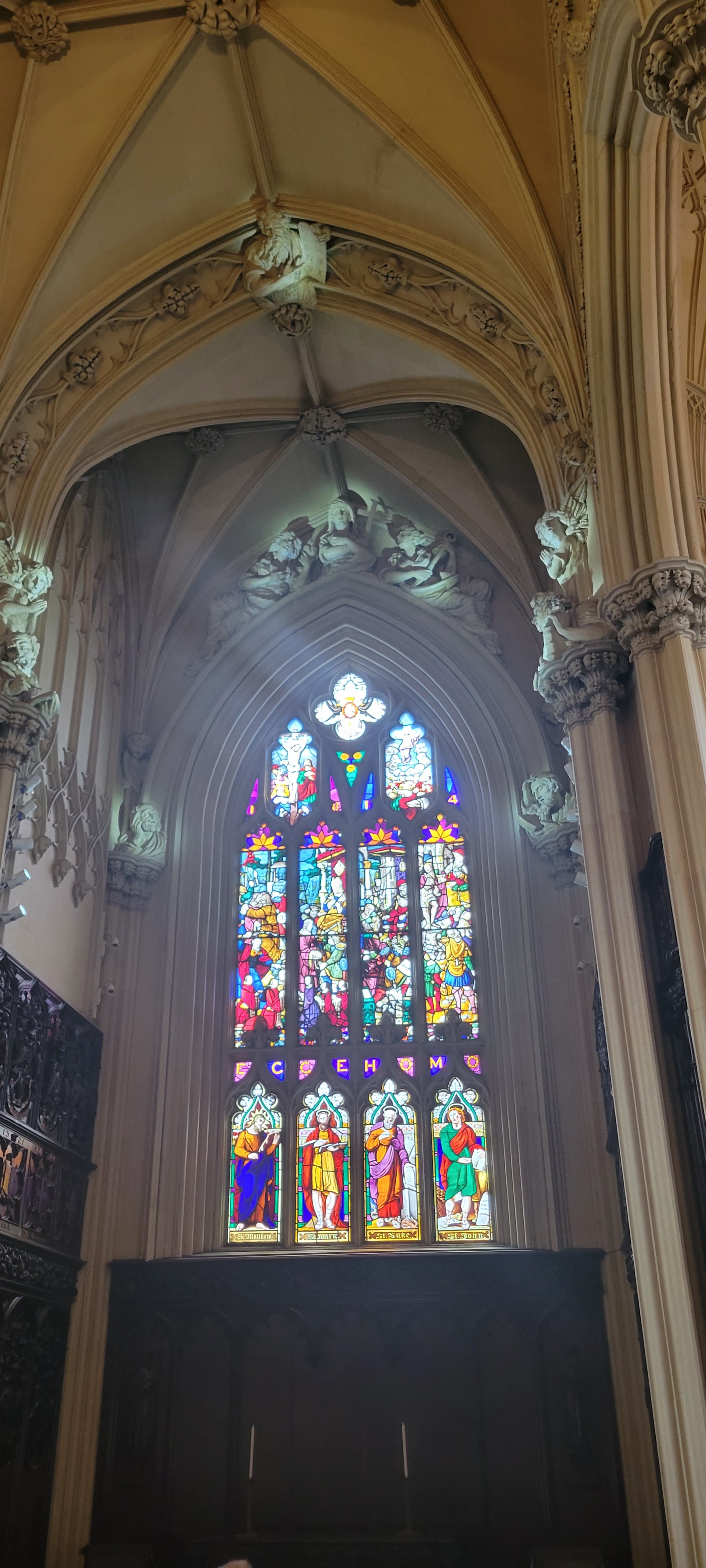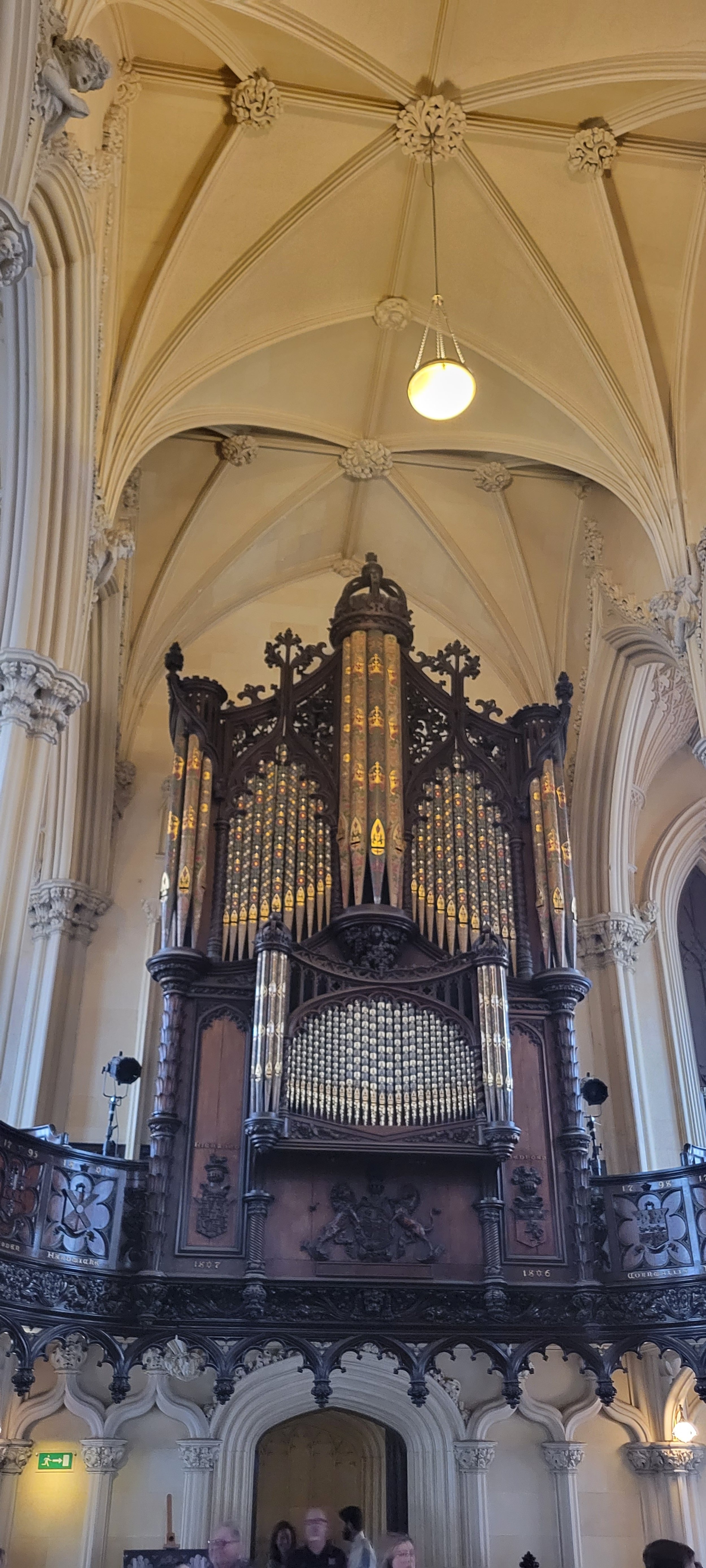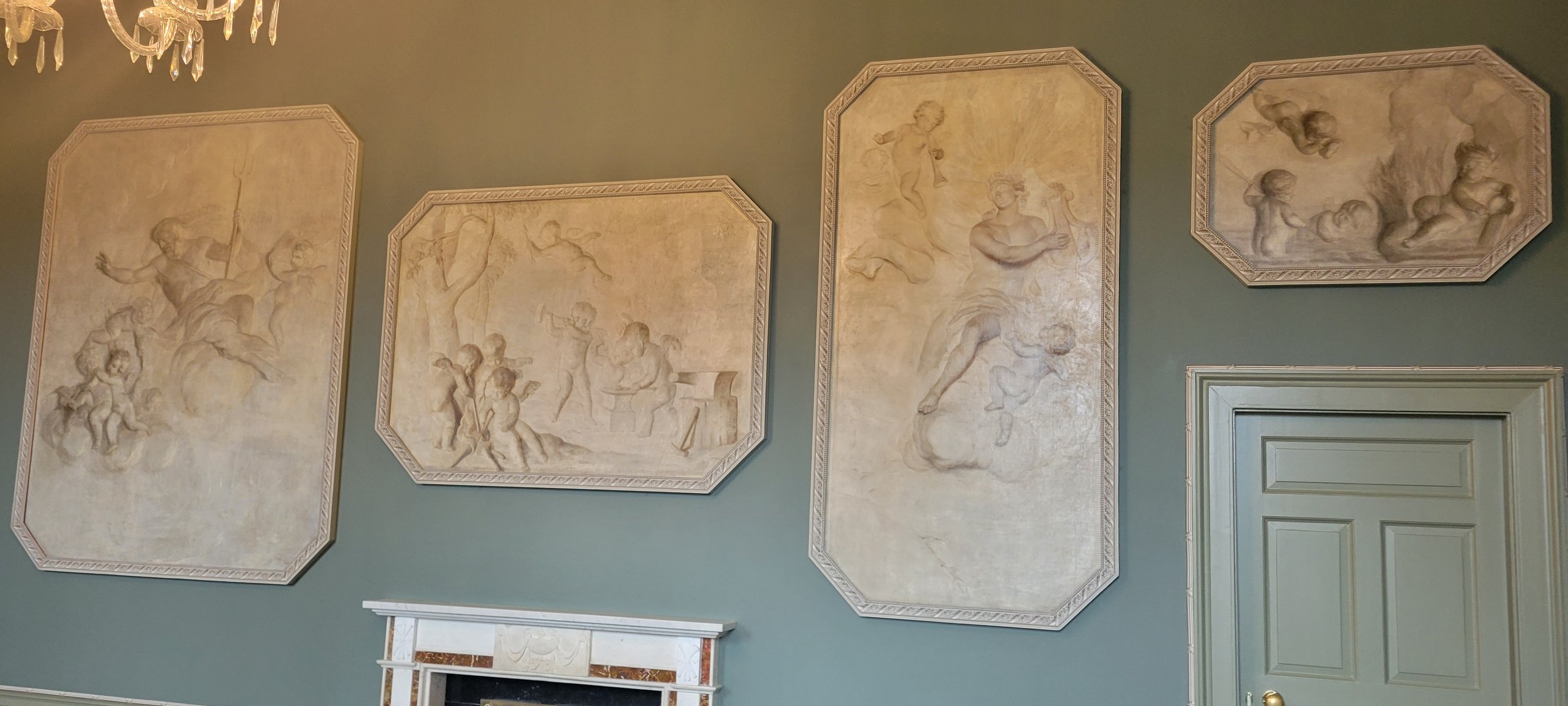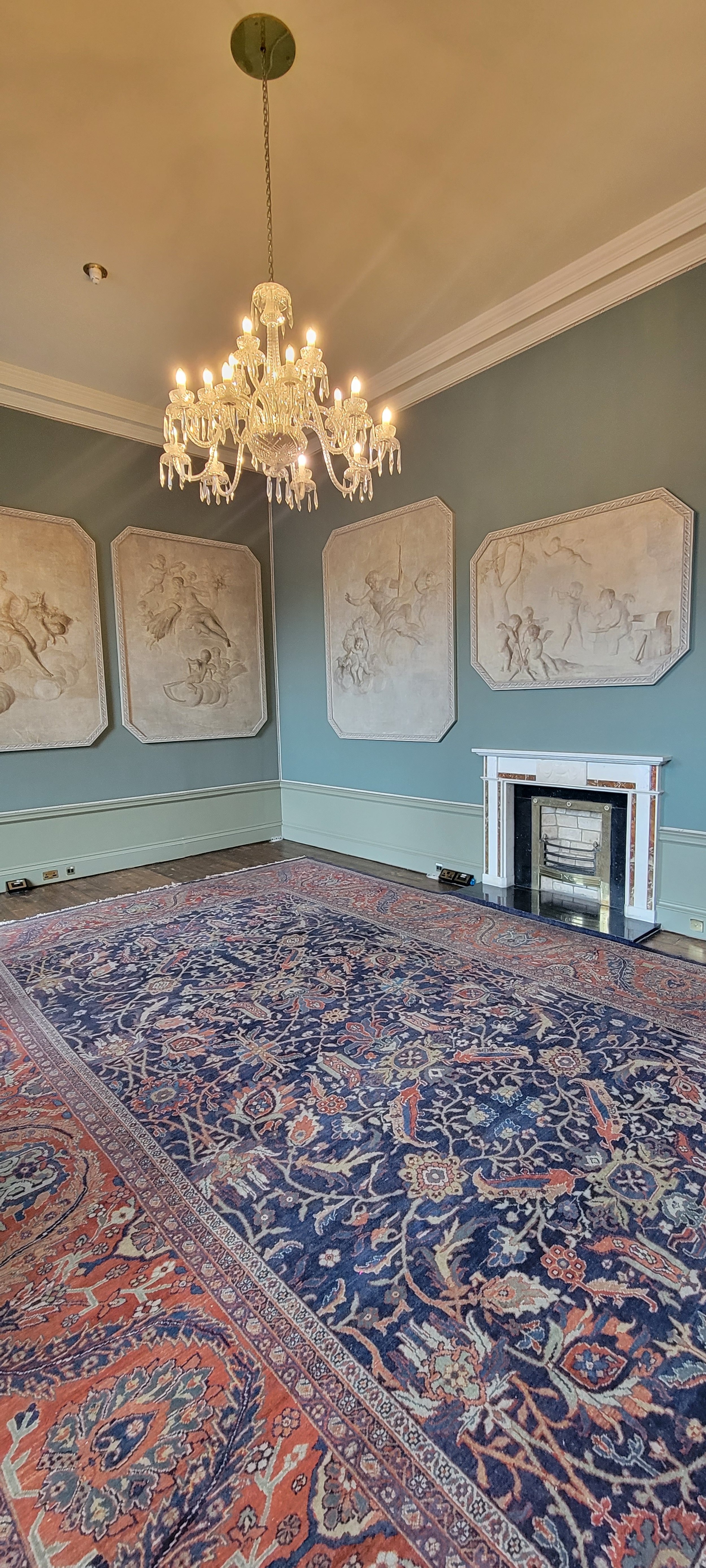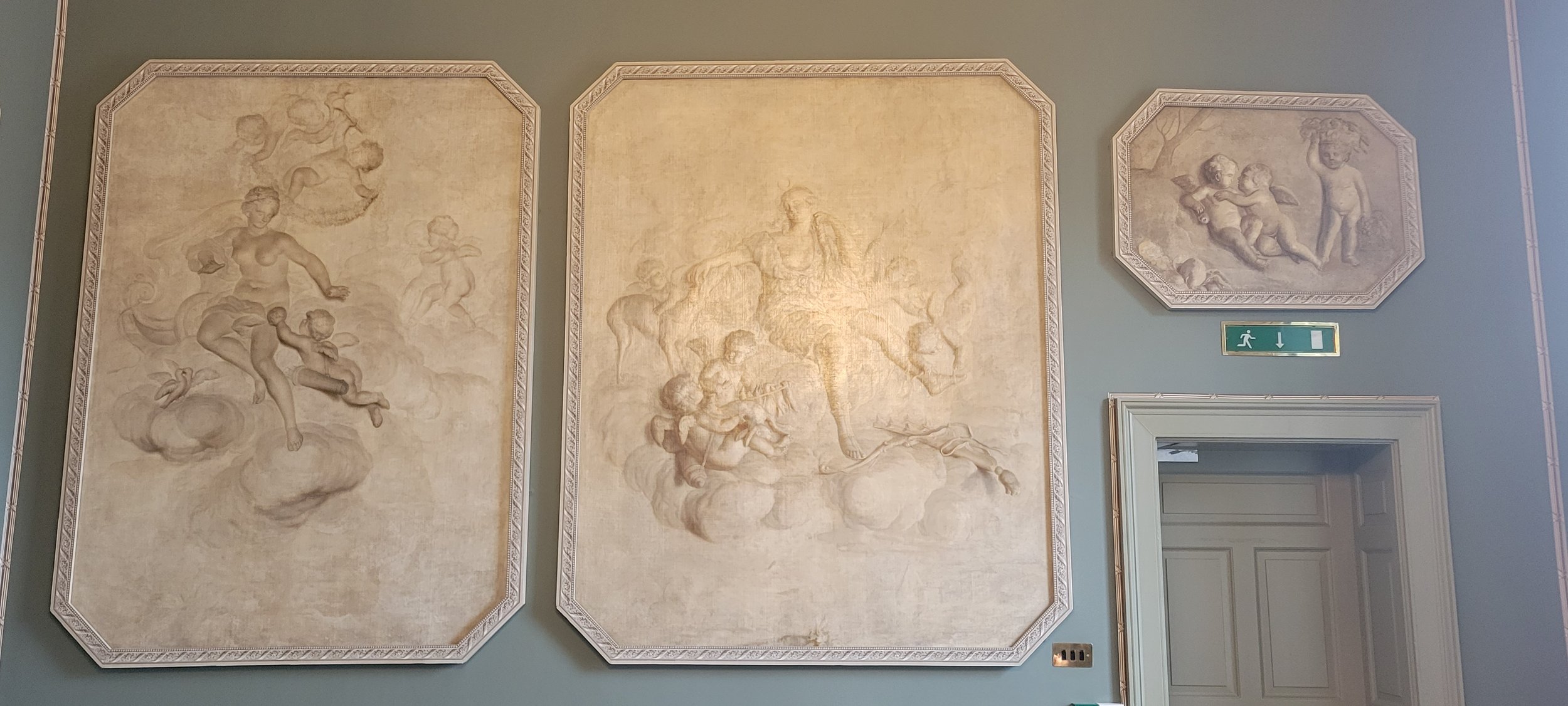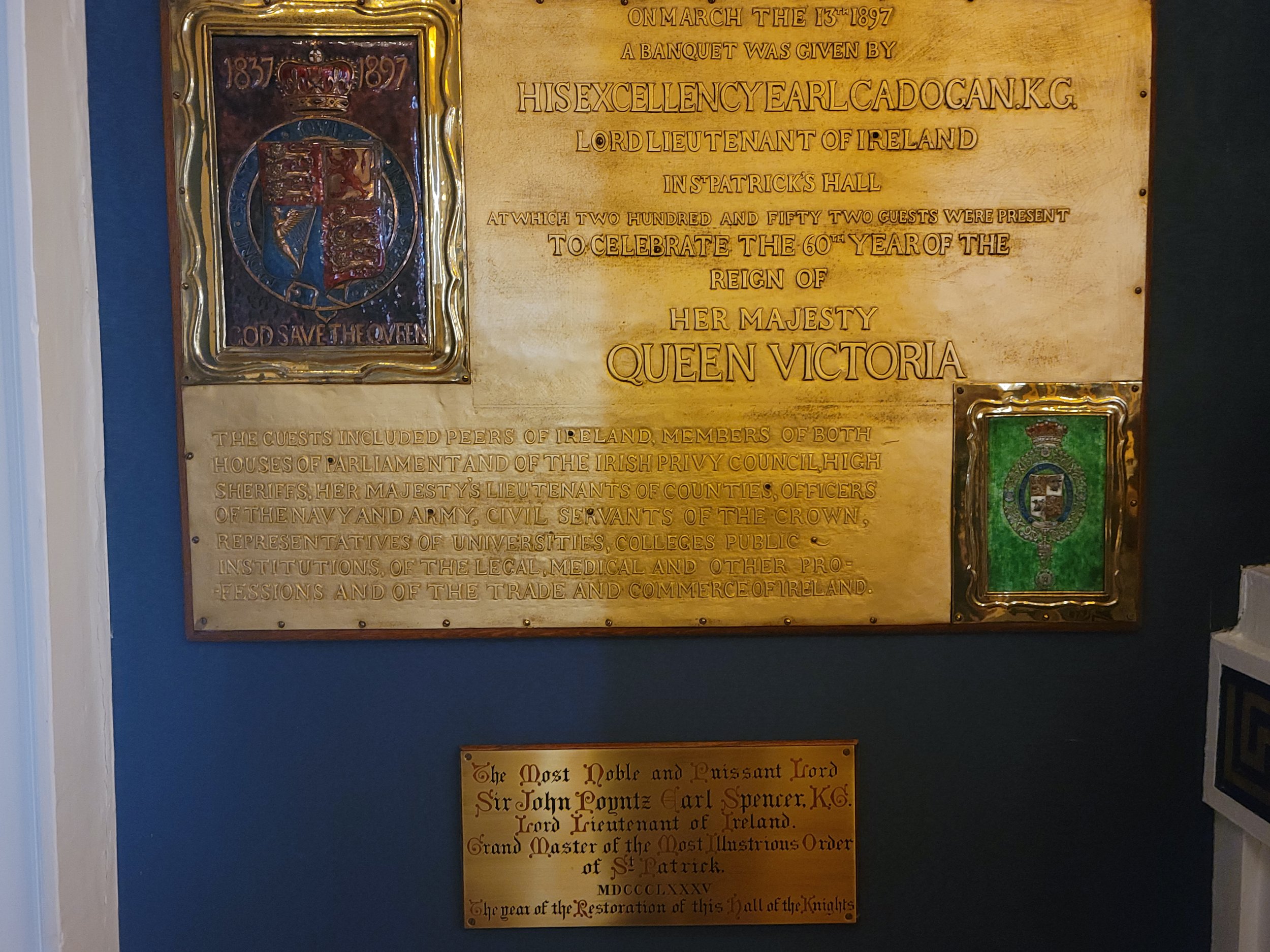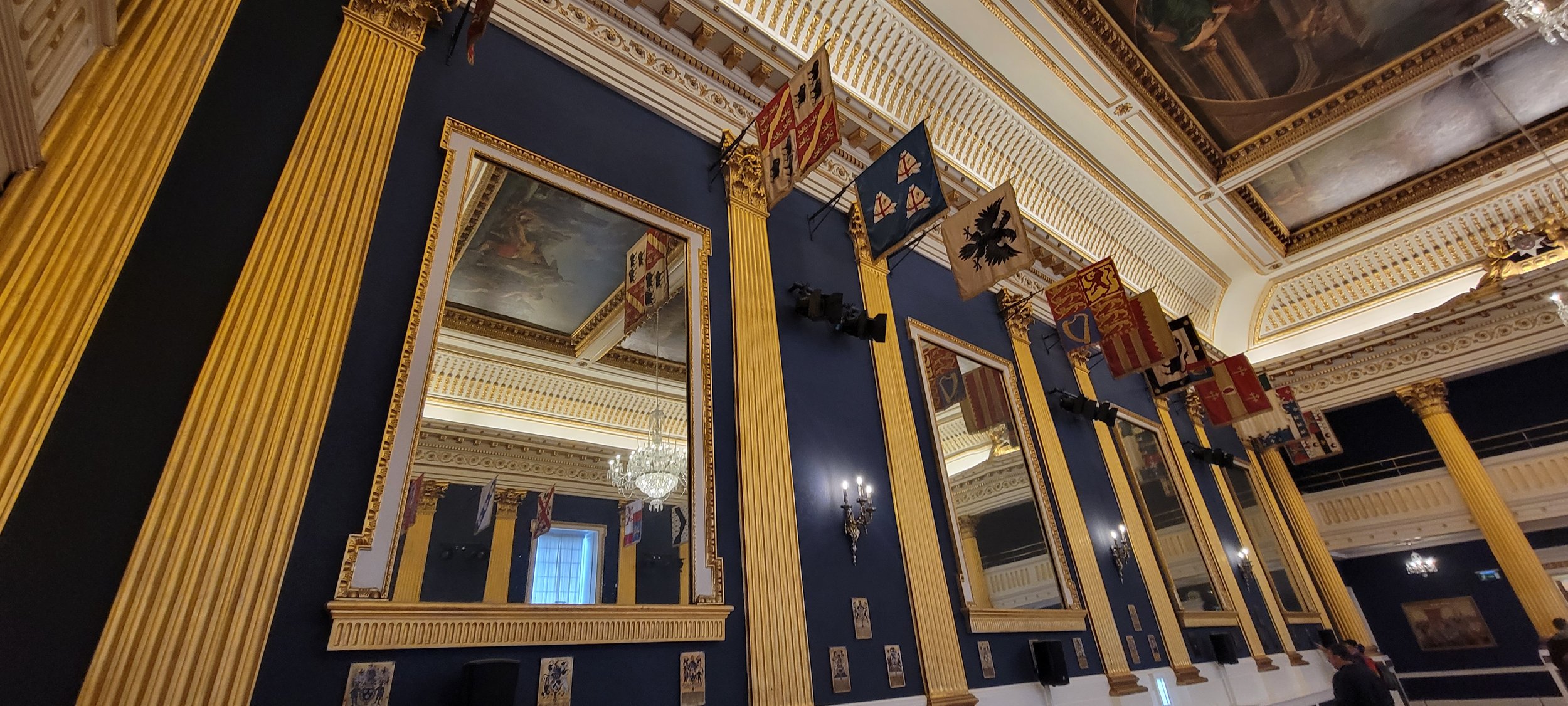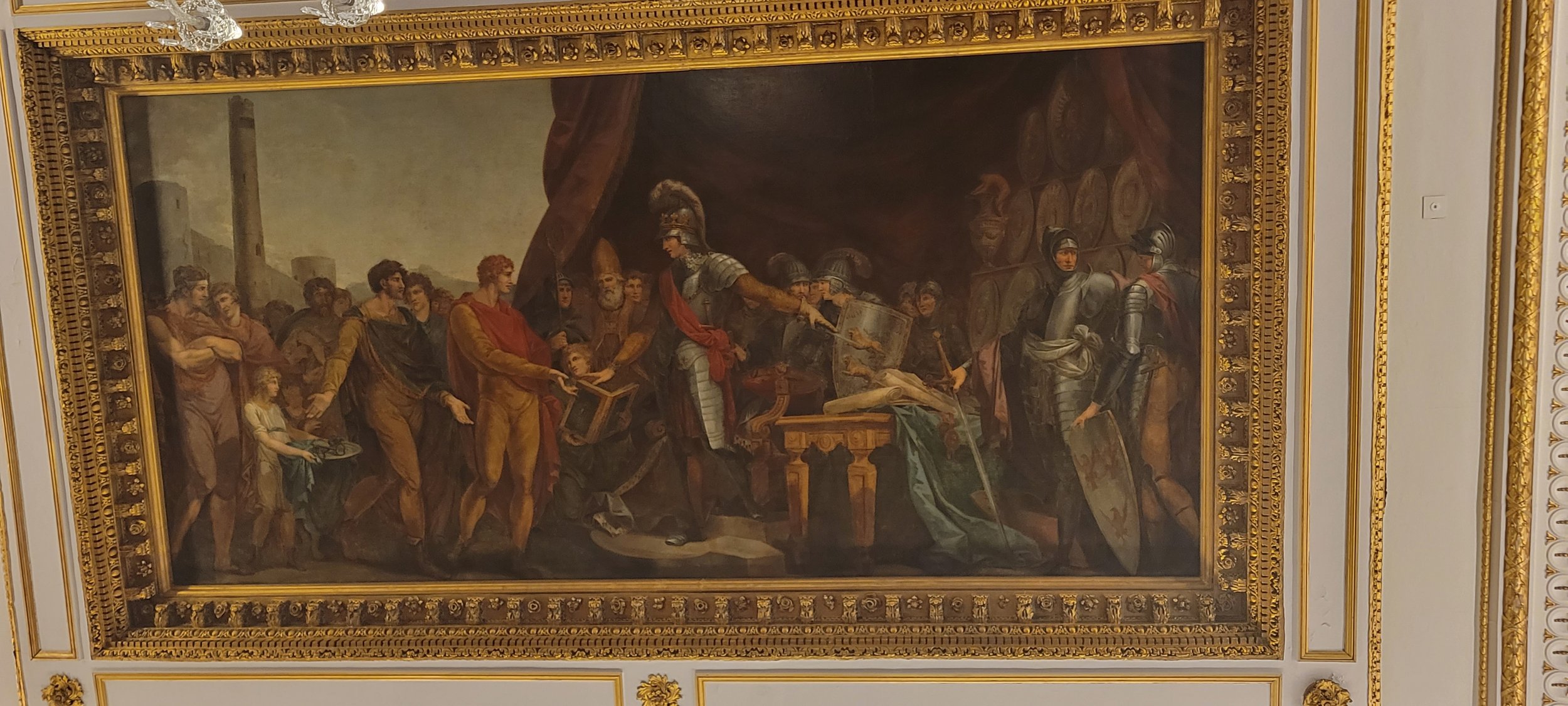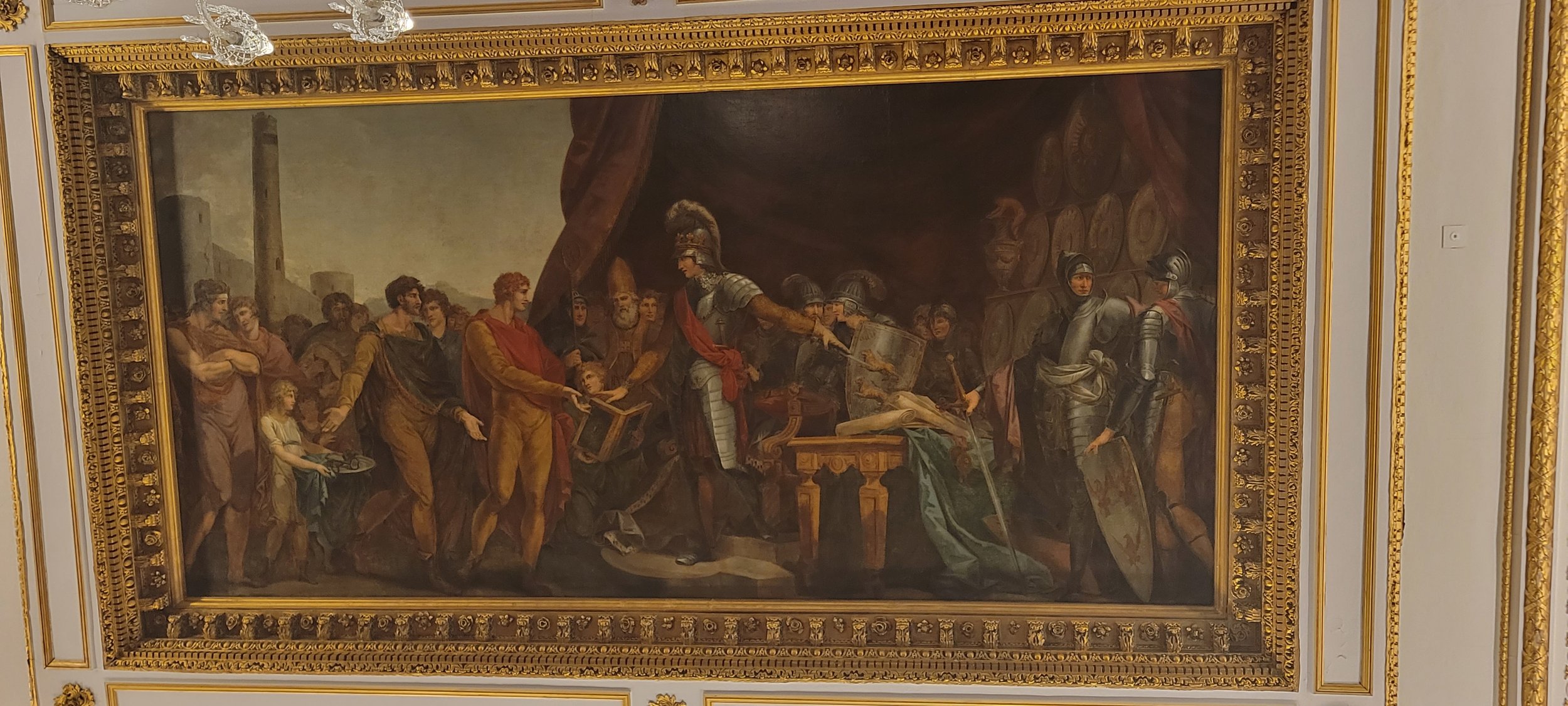Day 3 - Dublin Castle, Tea Bus Tour, Bookstores, and Preparing for the Road Trip
After a long day from our walking tour the day before, Kara and I grab an early breakfast at the hostel, filling up on toast, toaster oven sausage rolls, fruit, and tea. We walk through town toward Dublin Castle, ready to hop onto the earliest tour we can book. When we arrive at the castle grounds, we notice there is a bustle of set-up for some kind of ceremony at the castle. After talking to the people setting up, we find out that it is the one-hundredth anniversary celebration of the establishment of the Irish police force, officially founded after Ireland’s independence in 1922. Before coming to Ireland, I did not realize how auspicious 2022 would be for Irish history. While I think of Ireland and Irish heritage as an extremely old series of traditions and customs, I too often forget that the Irish were subjects of England for a large swatch of that history.
We head into the castle and get our Office of Public Works Heritage Pass. This pass cost €40, and was well worth the price. If you have the Heritage Pass, you can get into any sites that are managed by the Office of Public Works for free for one year. While not all of our destinations were managed by the Office of Public Works, our passes paid for themselves at least twice over.
Our tour guide corrals her group together. Instantly, we notice a heavy showing of both Nebraska Huskers and Northwestern colors in our tour group, who continue to flood Dublin. She takes us down to the first part of the tour, where she explains much of what we had learned from our walking tour guide the day before. However, during her talk, a rude man donning Northwestern gear answers a call and starts talking loudly into his phone right in front of our tour guide. She politely asks him to step outside to take his call, which he only does reluctantly. Then, when he comes back in with 3 more people who were well late to the tour, the guide begrudgingly takes on the number over and above the max she is allowed to. As an American, I was embarrassed beyond belief at their behavior.
The rest of the tour continues and she takes us down underground, where the foundation of the castle was. We go deeper than I expect, seeing water flow next to ancient, buried walls and the hollowed out foundation of the old tower. With an old city like Dublin, seeing how much has been built atop the old rubble of medieval towers and sewers makes the length of its history salient.
We are led out of the underground excavation areas and back to the modern halls of Dublin Castle. In it, there is a grand double-staircase with a deep maroon carpet running up the stairs. We follow the guide up the stairs, where she shows us a ballroom and the history of the rest of the historic castle. At this point, she leaves us to explore the rooms throughout on our own. The ballroom, oil paintings, and more are memorable, but for some reason a much less magnificent feature sticks in my mind.
To navigate to the rooms in the castle, you have to walk down a long white hallway. On either side of the hallway alternate the photos and biographies of all of the Irish presidents. With only 100 years of Irish presidents to showcase, the photos are spaced out farther than expected to fill out the hallway. In one hundred years of history, there have only been 9 presidents. The fact that only 9 people’s terms in office separate Ireland from British colonial rule is such a small number. Yet the Irish are proud of their leaders and their country, and have shown they are more progressive with their election choices of their leaders than the United States—Mary Robinson was the first female president elected in Ireland in 1990. Furthermore, the portraits of the various leaders with their selected representations are iconic of their policies and focuses, meant to display symbolism surrounding their major achievements in office. These grab and keep my attention more than most of the other paintings of old regents or heads of houses from centuries past.
We finish exploring the interior of Dublin Castle, then decide to grab our things and start heading toward Temple Bar. On a whim, I bought Kara and I tickets on a Touring Tea Bus, where we will be served tea on an old 1960s double-decker bus that has been painted with cute colors and animals on the outside. We have some time to kill before then, so we stop in a few charity shops along our path, and I also make sure we visit two bookstores in Temple Bar. I buy books from one of them, a used bookshop where a man and his daughter are tending the shop. I give him cash to pay for 3 books, and he makes change from an old cookie tin that is the store cashbox. The transaction feels quaint, like something that would happen if I asked my grandma for change. It doesn’t quite feel like I am buying a book in an expensive, tourist-trafficked district in Dublin. It is the kind of bookstore I could only own in my dreams—used books all around, vintage children’s books, history books, rare editions, and miscellania. Running the store out of a cookie tin further romanticizes the venture. Thinking of it now, my heart aches as I fear the future cashless society, where cookie tins are obsolete and the only way to pay for books is with Square credit card readers on iPads.
We still have some time to kill as we wait for the bus to arrive at the pickup point, so we hit a few more shops along the Temple Bar route. Finally, the bus arrives and we take our place on the top deck. The bus has been heavily altered to include bench seats that face eachother, and each table is laid out with plates of sandwiches and sweets. When the bus begins to move, we notice the sticky placemats under the plates and silverware to prevent it from sliding all over. We also notice how little suspension the bus has as we bounce up and down on the cobblestone streets of Temple Bar.
The bus drives us up and down the Liffey first as a charismatic young man chimes in to give a bit of history about each major landmark we pass. Some of the factoids are things we learned from our first few days in Dublin, but we get to see and learn a few new things along the way. For example, we learned that the third largest consumer of Guiness, after Ireland, is Nigeria. This surprising fact is because the 2nd largest Guiness factory is in Nigeria.
More facts fly at us as we pass various parks, statues, churches, and more. We get to see Georgian houses that we were unable to see on our previous ventures, and enjoy some decent food. At the end, with our freshly refilled tea cups, we are served wonderfully warmed scones for dessert, which tops off our already full stomachs.
The bus tea tour finally finishes, dropping us off back in Temple Bar. With no more plans for the day, we hit up some more bookstores. I don’t expect to find many other bookstores on our trip and want to ensure I get my fill of books while we are in the reading city of Dublin (although it will be no surprise that we found more bookstores along our trip anyway).
Exhausted from a long day, we head back to the hostel, relax for a bit, and prepare our plans for the next day. Tonight is our last night in Dublin, so we do as much packing as we can do ahead of time, then head back out for a pint at a local pub. The night is fairly uneventful, but the crowds are coming out on the Friday evening. Rather than !get rowdy with the drunk folks in Temple Bar, we bunker down in the hostel for an early night of sleep. Tomorrow, we pick up the campervan and start the roadtrip!
